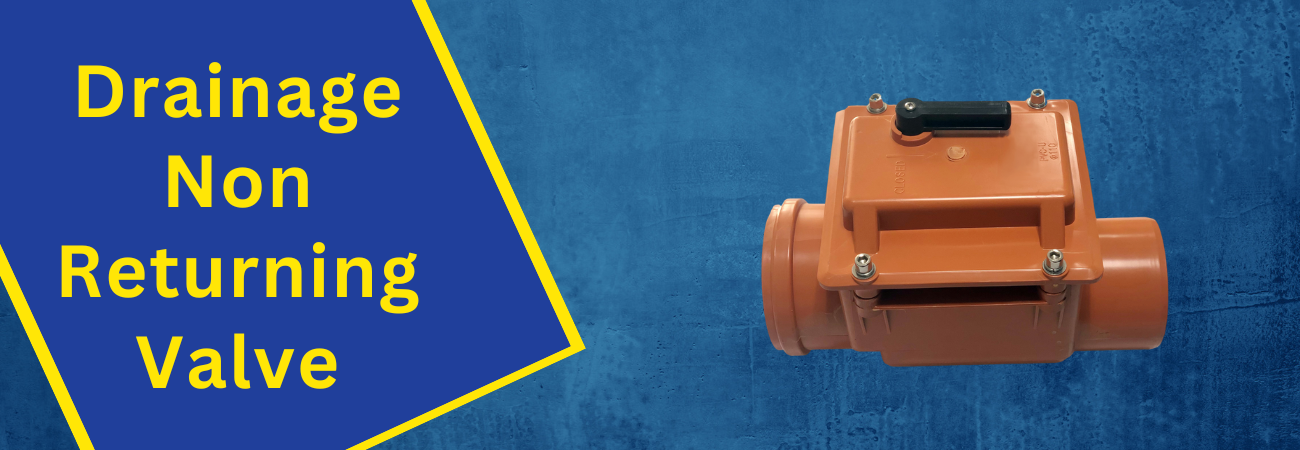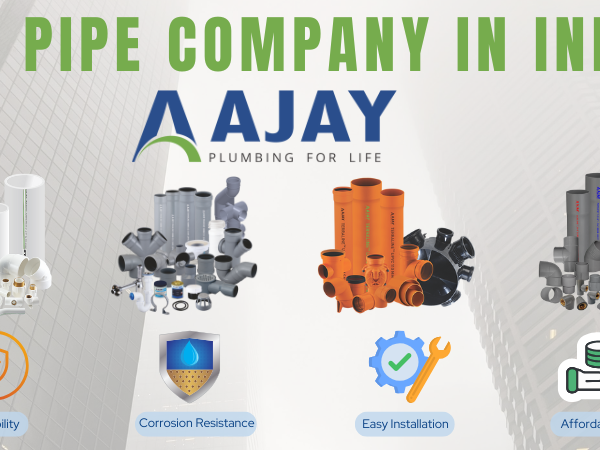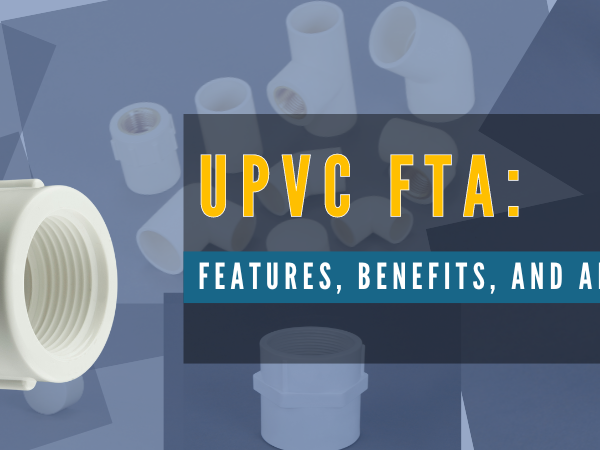Introduction
What is Drainage ?
Drainage is the removal of water from a surface or subsurface through artificial or natural means. Here drainage is referred to as the artificial means of removal of waste water using various drainage products. It is one of the major elements of civil engineering and is implemented in construction projects to avoid flooding and other damages.
In the case of agriculture, drainage ensures that the soil is properly aerated. Excess of still water in the farmland can choke your crops and destroy them. Implementing a proper drainage system in the farm reduces soil and nutrient loss from the runoff and avoids soil erosion.
What is a Drain
A drain is a conduit for unwanted/ wastewater to be flumed away to a more useful area or into sewers. We at Ajay pipes ensure that the drain design and installation for parameters are engineered efficient functioning for its intended purpose. Our exclusive collection of SWR pipes & fittings known as “Ajay Drainline” & UDS pipes and fittings known as “Ajay Terraline”.

Drainage Problems
Lack of a proper drainage system leads to several drainage problems like the accumulation of water, soil erosion, damages the stability of the building foundation, and much more.

After heavy rains, water may accumulate on the roadside like ponds. A wet surface of the road reduces the friction thus leading to longer braking distances. This causes the road to be very much slippery and the sudden change in friction can shock the motorists. Proper drainage systems implemented in the roads not only increases the lie of the roads but also reduces the risk of motorists from accidents.
Uncontrolled water that flows on the road causes erosion. Culverts are one of the risk places for erosion. Culvert is a tunnel that allows water to flow under a road, trail or a railroad from one side to another. It can be made from reinforced concrete, pipe, or any other material. Improperly constructed culverts like the ones with small diameter and clogged ones can cause water to flow towards the road and leads to erosion. In case the water from a culvert is led to erosive soil, it leads to erosion.


Improper drainage or lack of gutters or having them disconnected in the drainage system implemented at your home can dump lots of excess water into the soil surrounding your home or industry. This will highly affect the stability of your foundation as the excess moisture causes the clay soils to expand thus leaving the foundation to heave upward also because of poor drainage and sanitation, water runs over the ground during rainstorms, picks up faeces and contaminates water sources. This contributes significantly to the spread of diseases such as typhoid and cholera, and may increase the likelihood of contracting worm infections from soil contaminated by faeces. Flooding itself may displace populations and lead to further health problems.
TYPES OF DRAINAGE

DOMESTIC DRAINAGE
The wastewater from residential buildings that carries body wastes, washing water, laundry wastes, and other wastes are termed as domestic drainage. In the domestic drainage system, the wastewater is collected through drain pipes by gravity and is either channelized to a public sewer or a domestic septic tank.

INDUSTRIAL DRAINAGE
Wastes that result from industrial processes like production or manufacturing of goods are termed as industrial drainage.

MUNICIPAL DRAINAGE
Municipal drainage is the ditches, dykes, or closed systems like pipes or tiles buried in the underground. It is built by a local municipality.

SURFACE AND SUBSURFACE DRAINAGE
Surface drainage is the orderly removal of excess water from the surface of the land by artificial means. This can be implemented by installing shallow ditches also known as open drains. The water from the open drains is discharged into larger and deeper collector drains.
Subsurface drainage is the removal of excess water in the subsoil. Our subsurface drainage system involves the usage of pipes that are perforated with a series of holes so that they are good enough to allow the subsoil water to pass through the pipe body.

OPEN AND CLOSE DRAINAGE
Open drainage is an open channel used to collect wastewater that is not sewage. Open drainage systems are often used on farmlands than in urban areas. They collect rainwater and discharge them in agricultural lands. Using open drains to dispose of sanitary wastes is extremely unsafe and unhygienic to society.
Closed drainage is structured as a complex network in the underground. They collect wastewater from individual areas and then transport them to a treatment plan.

INTERNAL AND EXTERNAL DRAINAGE
Internal drainage does not involve any external construction for water lines. All that is needed is to jackhammer your basement to create a trench and then lay waste pipe. The implementation is then enclosed.
The external drainage system draws water away from the basement through a drain pipe and is eventually led to a storm drain that is positioned lower than the basement floor.
Drainage System of India
The drainage system in urban areas of our country is an important priority because of rapid growth in urbanization, industrialization, and population. A good drainage system has proved to reduce diarrhea. India is an agricultural country. Water logging in irrigated regions may result in the accumulation of salts in the plant root zone. To cope up with this it is very much essential to implement an artificial drainage system in poorly drained agricultural fields to provide optimum air and salts environments in the root zone.
We at Ajay pipes design waste water drainage systems that ensure the transportation of wastewater and sewage to disposal points. We implement high-quality drainage and sewer pipes that are made up of PVC and UPVC materials that are durable.
For any queries, contact the plumbing experts at Ajay pipes on the Toll Free No. : 1800-11-4050 or via email at our email address info@ajaypipes.com















